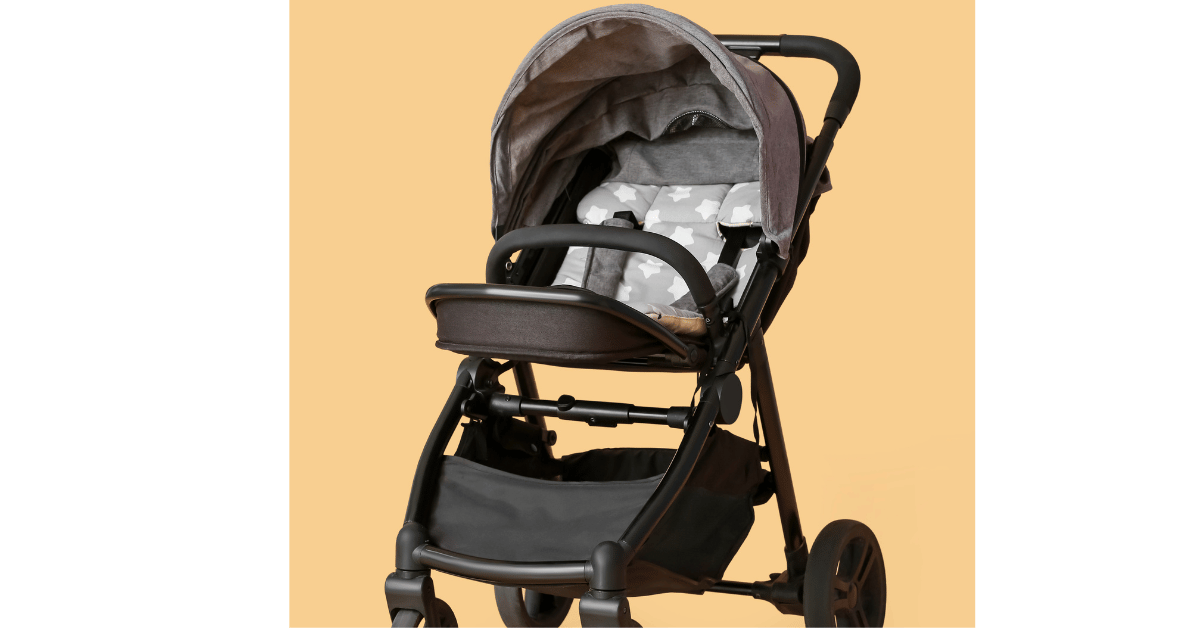3-Wheel vs 4-Wheel Strollers –Advantages and disadvantages (Latest updated )
If you’re looking for a new stroller, you might need help choosing a classic 4-wheel model or a trendy 3-wheel one. Although the latter has become more popular recently, each configuration has unique advantages.
In this article, we’ll compare 3-wheel-vs-4-wheel-strollers to help you decide which type is best for your family’s needs. We’ll examine the distinctive features and pros and cons so you can choose the perfect set of wheels for your family’s strolling adventures. Whether you prefer the stability of a 4-wheel stroller or the maneuverability of a 3-wheel one, let’s embark on this journey together.
3-Wheel vs 4-Wheel Strollers – Detailed analysis
The increasing popularity of three-wheel strollers is due to their exceptional mobility. These strollers have a singular front wheel design that allows them to pivot effortlessly, making them a popular choice for parents navigating bustling streets and confined spaces. However, it’s essential to consider that this design has trade-offs, particularly in terms of stability compared to four-wheel strollers.
Advantages

Below we will discuss in detail 3-Wheel-vs-4-Wheel-Strollers.
1-Mobility and Maneuverability:
The three-wheel strollers have an outstanding feature of unparalleled maneuverability. Parents can easily navigate tight spaces and crowded streets with a single wheel at the front, making it an ideal option. The strollers’ one-handed maneuverability is a notable advantage, allowing parents to effortlessly dart between obstacles while holding groceries or tending to their little ones.
2-Stability Considerations:
Four-wheel strollers are known for their stability as they evenly distribute weight, which reduces the likelihood of toppling. However, some three-wheel models have a lower center of gravity, ensuring stability even with a single front wheel. Keeping both wheels on the ground when navigating curbs and uneven terrain with three-wheelers is essential to maintain stability.
3-Off-Roading Capability:
Three-wheeled strollers are designed to handle a variety of terrains, including off-road locations such as trails, sandy beaches, grassy parks, and rocky roads. With enhanced suspension, the strollers ensure a smoother ride for the little ones, protecting against bumps and dips.
4-Wheel Features:
Three-wheel strollers, also known as jogging strollers, have larger rubber wheels that are air-filled and similar to bicycle tires. These wheels are designed to absorb impact on uneven ground and provide a smooth ride for the baby while the parent engages in jogging or running exercises. Regular tire checks and maintenance are recommended to prevent punctures and ensure the stroller is safe.
5-Easy Handling and Aesthetics:
Swiveling front wheels that rotate 360 degrees make it easier to turn corners and efficiently handle the stroller. This feature allows parents to steer the stroller with one hand, which is very convenient when they are on the move.
Three-wheel strollers have an aesthetic appeal that goes beyond functionality. Their stylish and sporty designs make them stand out from traditional strollers.
These strollers are practical and fashionable, making them popular among celebrities like Madonna and British royalty.
Disadvantages
When considering purchasing a three-wheel stroller, it’s important to note that while they offer excellent mobility and versatility, they also come with disadvantages. Understanding these drawbacks can help you make an informed decision based on your needs and preferences.
1-Size and Storage Challenges:
Three-wheel strollers, especially jogging models, are often bigger and heavier, making storing and transporting them difficult. The large wheels and overall bulkiness can make loading them into car trunks hard. Sometimes, you may need to remove the wheels, which can add complexity, particularly when you have a wiggly toddler.
2-Weight and Maneuverability Trade-Off:
Although three-wheel strollers, mainly jogging strollers, offer superior maneuverability, they are not lightweight. While they can enhance your workout experience, collapsing and carrying them, particularly upstairs, can be challenging. The sturdiness and large wheels contributing to smooth jogging performance may become a disadvantage when weight and compactness are crucial factors.
3-Storage Space Requirements:
The design of three-wheeled strollers may require more storage space due to their larger footprint. Detaching wheels for storage can further complicate the process.
4-Higher Cost:
Three-wheeled strollers, particularly those designed for jogging or off-road activities, are usually more expensive than their four-wheeled counterparts. This higher cost is typically associated with specialized features and improved durability.
5-Limited Everyday Use Options:
Three-wheeled strollers, particularly those designed for jogging or off-road activities, are usually more expensive than their four-wheeled counterparts. This higher cost is typically associated with specialized features and improved durability.
6-Limited Choices in Three-Wheel Category:
The market for three-wheel strollers is limited compared to four-wheel strollers, which may present challenges for those seeking specific features or designs.
Factors for Choosing the Perfect Stroller:
Choosing the perfect stroller for your child involves considering several factors to ensure it fits well into your daily routine and provides comfort and safety to your little one. Below, we will examine the essential aspects to consider when making this critical decision.
Lifestyle Compatibility:
Urban or Outdoorsy: When considering a mode of transportation, those who live in cities may prioritize maneuverability in crowded spaces, while those who enjoy outdoor activities may prefer sturdier, all-terrain options.
Safety Measures:
Harness Type: Ensure the stroller features a secure five-point harness, which is particularly advantageous for toddlers.
Brake Inspection: Test the brakes for a firm and reliable hold.
Frame Examination: Inspect the frame for potential safety hazards, focusing on areas that may pose a risk to tiny fingers.
Ease of Use:
Folding and Transportation: Evaluate how easy it is to fold, transport, and store the stroller. Consider whether you can lift it into your car effortlessly.
Steering Convenience: Determine if the stroller requires both hands for steering or can be managed with one hand.
Comfort Features:
Reclining Seat: A fully reclining seat offers versatility for on-the-go naps.
Adjustable Handlebars: Opt for strollers with adjustable handlebars to customize the height for different users.
Removability and Washing: Check if seat covers are removable, machine washable, or spot clean only.
Maintenance Requirements: Inquire about special maintenance needs to keep the stroller in optimal condition.
Accessories: Consider additional features such as cup holders, sun canopies, wet weather gear, and ample basket space for essentials and shopping bags.
Age Suitability:
From Birth Capability: Verify if the stroller suits newborns, looking for features like newborn-ready padded inserts or compatibility with infant carriers.
A comprehensive approach to these factors ensures that the chosen stroller aligns with your needs and preferences. Whether navigating city streets or venturing into nature, finding the perfect stroller involves thoughtful consideration of safety, convenience, comfort, and age suitability. Happy strolling!
FAQs: 3-Wheel vs 4-Wheel Strollers
Q: Is 4 or 3 wheels better on a stroller?
It depends on your preferences and needs. While 3-wheel strollers offer better maneuverability, 4-wheel strollers are lightweight, compact, and provide better stability.
Q: What kind of stroller wheels are best?
If you engage in outdoor walking, rubber or polyurethane wheels are generally ideal. For indoor or smooth surface use, and if weight is crucial, EVA wheels might be best.
Q: How do I choose a safe stroller?
Opt for a stroller with a wide wheelbase and a low seat in the frame. Ensure resistance to tipping backward when pressing lightly on the handles. If there’s a basket, it should be down on the back and in front of the rear wheels.
For more advice on strollers visit our guides
3-Wheel-vs-4-Wheel-Strollers – Final Thoughts
When choosing a stroller, there are two main designs: 3-wheel and 4-wheel. The choice between 3-Wheel-vs-4-Wheel-Strollers Strollers depends on your personal preferences and lifestyle needs.
3-wheel strollers are known for their excellent maneuverability, making them ideal for crowded spaces or outdoor activities. They are also sporty and stylish but can be heavy and oversized, which may make storage and transportation difficult.
On the other hand, 4-wheel strollers prioritize stability and versatility and can be used on various terrains for everyday use. They are lightweight and compact, making them easy to store and transport. There are many options in different price ranges, which adds to their appeal.
Ultimately, whether you choose a 3-wheel or 4-wheel stroller depends on your comfort, safety, practicality needs, and individual preferences. Both strollers 3-Wheel vs 4-Wheel Strollers can provide a seamless and enjoyable journey through parenthood.
If you want to get advice on baby car seats visit our guides
To get knowledge on baby diapers do visit




Usually I do not read article on blogs however I would like to say that this writeup very compelled me to take a look at and do it Your writing style has been amazed me Thank you very nice article
I do not even know how I ended up here but I thought this post was great I do not know who you are but certainly youre going to a famous blogger if you are not already Cheers
I was recommended this website by my cousin I am not sure whether this post is written by him as nobody else know such detailed about my difficulty You are wonderful Thanks